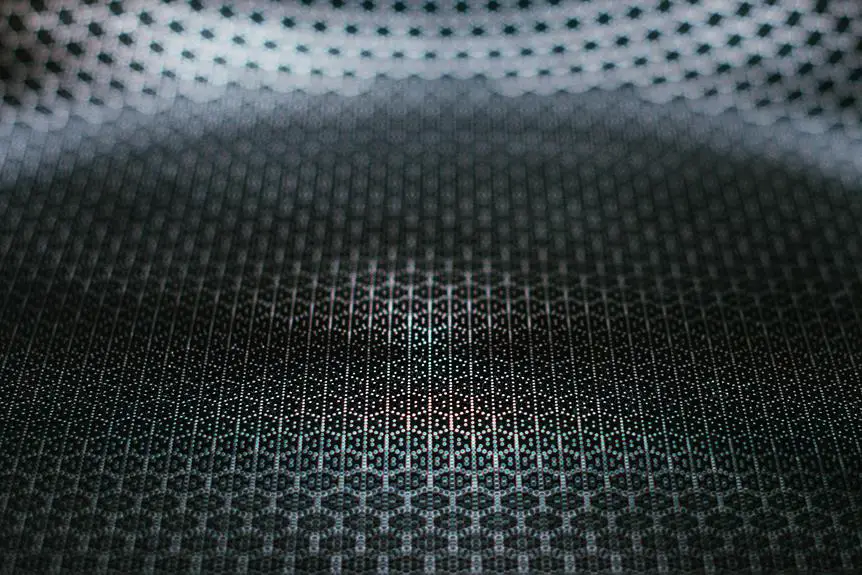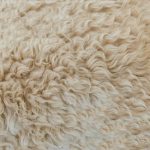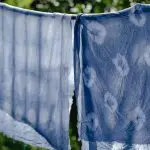When you're faced with the delicate task of ironing voile fabric, it's crucial to approach it with care to maintain its soft texture and appearance. You'll want to start by preparing your workspace with the right tools, ensuring your iron is set to a low to medium heat. But there's more to it than just temperature settings; the techniques you employ can make a significant difference. Curious about the best practices and tips to avoid damaging this lightweight fabric? Let's explore the specifics that will help you achieve the perfect finish.
Table of Contents
Understanding Voile Fabric
Voile fabric is a lightweight, semi-transparent textile made from cotton or polyester, known for its soft drape and delicate appearance. It's often used in curtains, blouses, and summer dresses, giving garments an airy feel. You'll appreciate its versatility, as voile can add a touch of elegance to your home décor and wardrobe.
When working with voile, be mindful of its characteristics. The fabric can easily snag or fray, so handling it gently is essential. Its lightness means it can shift while you sew or iron, so you'll want to secure it properly on your workspace. If you're using voile for apparel, consider its breathability, which makes it ideal for warm weather. However, this also means it may require careful maintenance.
Voile's semi-transparency allows for playful layering, giving you the freedom to mix textures and colors in your outfits. Keep in mind that lighter colors might show wrinkles more easily, so you'll want to pay attention to how you manage those creases. Understanding these aspects of voile fabric will help you appreciate its beauty and usability in your projects.
Preparing to Iron
Before you start ironing your voile fabric, you need to gather the necessary supplies.
Make sure to check the care label for specific instructions, as this will guide you on the right temperature and techniques to use.
With everything in place, you're ready to get started!
Gather Necessary Supplies
To get started with ironing voile fabric, you'll need a few essential supplies to ensure the process goes smoothly.
First, grab a reliable iron with adjustable heat settings. Voile is lightweight and delicate, so an iron that allows you to control the temperature is crucial. You'll also need an ironing board for a flat, stable surface.
Next, have a clean, lint-free pressing cloth on hand. This will help protect the fabric from direct heat and prevent any potential damage. If you don't have a pressing cloth, a clean cotton handkerchief or pillowcase can work just as well.
Don't forget to fill your iron with distilled water if it has a steam function. Steam can help remove wrinkles more efficiently, especially from delicate fabrics like voile.
Lastly, ensure your workspace is well-lit, so you can see any creases or wrinkles clearly. Having these supplies ready will make your ironing experience more efficient and enjoyable.
Once you have everything gathered, you'll be set to tackle those wrinkles like a pro!
Check Care Label
Checking the care label on your voile fabric is important to ensure you're using the right heat settings and techniques for ironing. Voile can be made from various materials, such as cotton or polyester, and each type has specific care instructions. Take a moment to locate the care label, often found on a side seam or the hem of the fabric.
Look for symbols that indicate the recommended iron temperature. If the label suggests a low heat setting, it's crucial to follow this guidance to prevent scorching or damaging the fabric. Voile can be delicate, and using too high a setting can lead to unsightly burns or melting.
Additionally, see if the label mentions whether to iron the fabric while it's damp or dry. Some fabrics benefit from a little moisture, making it easier to remove wrinkles. If it's safe to steam, you might also want to have a spray bottle of water handy.
Always remember to double-check the label before you start ironing to keep your voile looking pristine and beautiful for years to come. Following these care instructions will help you achieve the best results.
Choosing the Right Iron Settings
When ironing voile fabric, it's essential to select the right settings on your iron to prevent damage and achieve a smooth finish. Voile is delicate, so taking a few extra moments to adjust your iron can make a big difference. Here's what you should keep in mind:
- Temperature: Set your iron to a low to medium heat setting, typically around 300°F (150°C). High temperatures can scorch the fabric.
- Steam Function: Use the steam feature if your iron has one. The steam helps to relax the fibers and makes it easier to remove wrinkles without applying too much pressure.
- Ironing Surface: Always use a clean, smooth ironing board cover. A padded surface can help prevent fabric snagging, which is crucial for delicate voile.
- Test Patch: Before you start, test a small, inconspicuous area of the fabric. This ensures that the settings won't damage the material.
Ironing Techniques for Voile
Ironing voile requires gentle techniques to maintain its delicate texture and achieve a crisp finish. Start by ensuring your iron is set to a low temperature, ideally around 250°F (120°C), and use the steam function if your fabric allows it. Lay your voile flat on the ironing board, smoothing out any wrinkles with your hands before you begin.
To avoid direct contact between the iron and the fabric, use a pressing cloth. This thin layer protects the voile while still allowing steam to penetrate. Move the iron in smooth, gliding motions rather than pressing down hard. Focus on one section at a time, lifting the iron completely off the fabric before repositioning it.
If you encounter stubborn wrinkles, lightly mist the area with water using a spray bottle before ironing. Avoid staying in one spot for too long, as this can cause scorching or shine.
After you finish, hang the fabric immediately to help maintain its crisp look. By following these techniques, you'll keep your voile looking fresh and beautiful, ready for any occasion.
Tips for Preventing Damage
When you're ironing voile fabric, it's crucial to use low heat to avoid burns or melting.
Always test your iron on a scrap piece first to ensure it won't damage the material.
These simple steps can save you from costly mistakes and keep your fabric looking great.
Use Low Heat
Using low heat is essential for preserving the delicate fibers of voile fabric and preventing any potential damage. Voile is lightweight and can easily scorch if exposed to high temperatures. By adjusting your iron to a low heat setting, you protect the fabric and maintain its beautiful, soft finish.
Here are some tips to keep in mind when using low heat on voile:
- Check the Iron's Settings: Always ensure your iron is set to a low temperature, usually labeled for delicate or synthetic fabrics. This minimizes the risk of burning.
- Use a Pressing Cloth: Placing a thin cloth between the iron and the voile can provide an extra layer of protection, ensuring no direct contact occurs.
- Keep the Iron Moving: Don't hold the iron in one place for too long. Glide it gently over the fabric to avoid any hot spots that could cause damage.
- Iron on the Reverse Side: Whenever possible, turn the fabric inside out. This method protects the outer surface while still getting rid of wrinkles.
Test on Scrap
Before tackling your voile fabric, it's wise to test your iron's heat on a scrap piece to ensure you won't accidentally damage the delicate material. Voile can be sensitive, and a quick test will help you find the right setting.
Here's a simple guide to help you determine the right temperature:
| Heat Setting | Result on Scrap | Recommended Action |
|---|---|---|
| Low | No changes | Safe for ironing |
| Medium | Slight shine | Adjust if necessary |
| High | Shiny or scorched | Too high, lower the heat |
Using Steam Effectively
To achieve smooth results on voile fabric, you'll want to harness the power of steam effectively. Steam is your best friend when it comes to tackling the delicate fibers of voile. Here are some tips to make the most of it:
Use the Right Settings: Ensure your iron is set to the appropriate heat level for voile, usually a low to medium setting. This prevents scorching while still allowing steam to penetrate.
Keep Distance: Hold the iron a couple of inches above the fabric. This lets the steam rise and relax the fibers without direct contact, reducing the risk of damage.
Spritz with Water: For stubborn wrinkles, lightly mist the fabric with water before applying steam. This extra moisture can help the steam work more effectively.
Steam in Sections: Work in small sections to focus on one area at a time. This method gives you better control and ensures that each part of the fabric is smoothed out properly.
Caring for Ironed Voile
Caring for your freshly ironed voile ensures it stays smooth and beautiful for years to come. Start by storing it properly. Avoid folding the fabric tightly; instead, hang it on a padded hanger or lay it flat to prevent creases. If you must fold it, use tissue paper between the layers to minimize wrinkles.
When washing your voile, opt for a gentle cycle in cold water. Always check the care label for specific instructions. Avoid harsh detergents, as they can damage the delicate fibers. After washing, don't wring it out; gently squeeze out excess water instead.
If your voile gets wrinkled again, use a low heat setting on your iron, or steam it lightly to restore its smoothness. Always iron on the reverse side to protect the surface.
For everyday care, shake out your voile before wearing to release light wrinkles, and avoid exposing it to direct sunlight for extended periods, as this can fade colors. Following these simple steps will keep your voile looking fresh and elegant, ready for any occasion.
Frequently Asked Questions
Can I Iron Voile Fabric While It's Still Damp?
Yes, you can iron voile fabric while it's still damp. It actually helps release wrinkles more easily. Just make sure to use a low heat setting and avoid direct contact with the fabric to prevent damage.
What Type of Ironing Board Is Best for Voile?
For ironing voile, you'll want a sturdy, padded ironing board. Look for one with a smooth, heat-resistant cover to allow effortless gliding. Adjustable height features can also help you find the perfect position while ironing.
How Do I Remove Stubborn Wrinkles From Voile?
To remove stubborn wrinkles, you'll want to use steam. Hang the voile, then gently steam it from a distance, or use a damp cloth and iron on low. Don't rush; patience helps achieve smooth results.
Is It Safe to Use Starch on Voile Fabric?
Yes, it's safe to use starch on voile fabric, but be cautious. Test a small area first, and avoid over-saturating. Starch can help smooth wrinkles, but too much might make the fabric stiff.
Can I Machine Wash Voile After Ironing It?
Yes, you can machine wash voile after ironing it. Just be sure to use a gentle cycle and cold water to maintain its delicate nature. Always check the care label for specific washing instructions before proceeding.
- How Does Ring Spun Cotton Affect Garment Fit and Shape Retention? - August 13, 2024
- What Are the Challenges in Producing Ring Spun Cotton? - August 13, 2024
- Is Ring Spun Cotton Suitable for Plus-Size Clothing? - August 13, 2024







